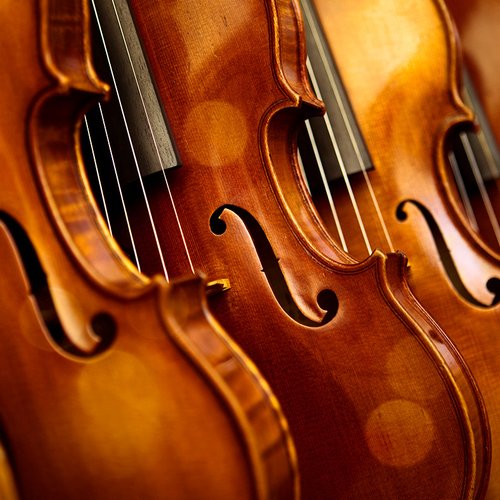Physicists create ‘the world’s smallest violin’ using nanotechnology
4 June 2025, 15:55

Ever had a friend tell you that the world’s smallest violin is playing when you whinge about something minor? Well now it actually might be.
Listen to this article
Physicists at Loughborough University have created what they believe may actually be ‘the world’s smallest violin’, which is small enough to fit within the width of a human hair, using cutting-edge nanotechnology.
The violin is a microscopic image, smaller than a speck of dust and can only be viewed in detail under a microscope, so sadly isn’t playable.
It is 35 microns long and 13 microns wide. To understand just how tiny this is, one micron is one millionth of a metre: a human hair typically ranges from 17 to 180 microns in diameter.
Read more: Japanese glassblowers create the world’s first playable glass violin

Making of the World’s Smallest Violin – You Won’t Believe the Size! 🎻
The team at Loughborough chose to create the tiny violin in reference to the phrase, ‘Can you hear the world’s smallest violin playing just for you?’ which they said is used to “mock exaggerated complaints or overly dramatic reactions”, and is often someone mimicking playing a tiny violin between their thumb and forefinger.
Classic FM did a deep-dive into the phrase in 2018, and discovered its origin in the TV show M*A*S*H. In a 1978 episode, Major Margaret Houlihan (played by Loretta Swit) rubs her thumb and forefinger together and says: “It’s the world’s smallest violin, and it’s playing just for you.”
Read more: What’s the origin of the ‘world’s smallest violin’?
This might seem like a bit of fun, but this creation marks the beginning of a whole new world of nanolithographic research. The violin demonstrates the capabilities of the Loughborough University’s new nanolithography system, which enables researchers to build and study structures at the nanoscale. Basically, this is the start of physicists being able to build more really, really tiny things.
One new project is exploring alternatives to magnetic data storage, and another investigating how heat can be used for faster and more energy-efficient data storage and processing.
“Though creating the world’s smallest violin may seem like fun and games, a lot of what we’ve learned in the process has actually laid the groundwork for the research we’re now undertaking”, said Professor Kelly Morrison, Head of Physics at Loughborough.
“I’m really excited about the level of control and possibilities we have with the set-up,” she added, “I’m looking forward to seeing what I can achieve – but also what everyone else can do with the system.”
























